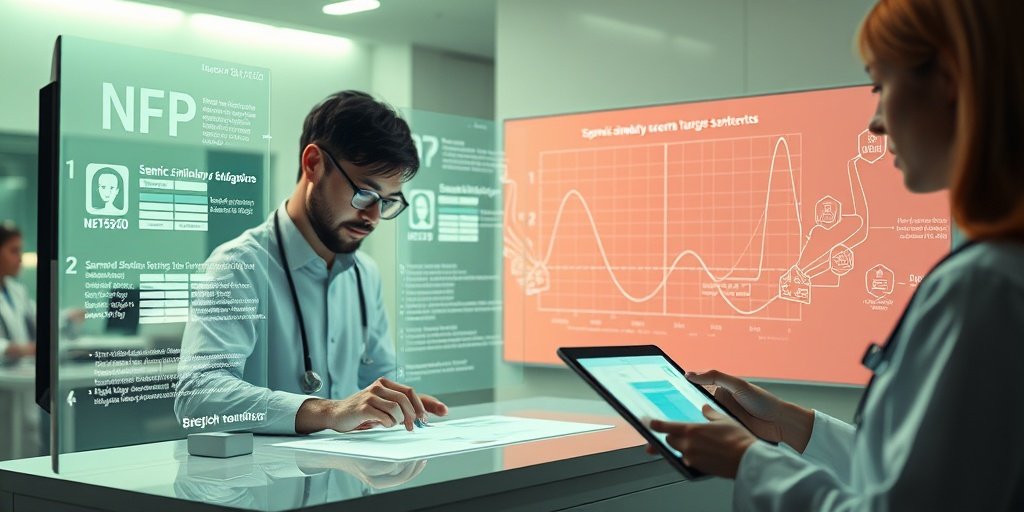⚡ Quick Summary
A recent commentary highlights a groundbreaking study that automates the scoring of speech intelligibility transcripts using Natural Language Processing (NLP) models. This innovative approach shows exceptional accuracy, outperforming traditional methods while raising important questions about data security and ethical considerations.
🔍 Key Details
- 📊 Study Reference: Herrmann, B. (2025). Leveraging natural language processing models to automate speech-intelligibility scoring.
- 🧩 Technology Used: NLP models including ADA2, GPT2, BERT, and USE.
- ⚙️ Methodology: Calculation of semantic similarity between transcripts and target sentences.
- 🏆 Performance: Negligible underestimation of intelligibility scores (2-4%) compared to simpler tools.
🔑 Key Takeaways
- 🤖 Automation of transcript scoring can significantly reduce manual effort.
- 📈 Accuracy of NLP models is superior to traditional scoring methods like Autoscore and TSR.
- 🔍 Semantic representations are crucial for the effectiveness of the scoring method.
- ⚠️ Ethical concerns regarding data security and model transparency must be addressed.
- 🌐 Open-source models are essential for ensuring reproducibility and ethical use in research.
- 🛠️ Herrmann’s tool is a valuable addition to the speech scientist’s toolkit.

📚 Background
The manual scoring of typed transcripts from speech intelligibility experiments has long been a labor-intensive task. Traditional methods often lack consistency and can be prone to human error. With advancements in Natural Language Processing, there is a growing opportunity to enhance the accuracy and efficiency of this process, paving the way for more reliable research outcomes.
🗒️ Study
The study by Herrmann (2025) introduces a novel approach to automate the scoring of speech intelligibility transcripts. By leveraging advanced NLP models, the research aims to calculate the semantic similarity between listener transcripts and target sentences, thus providing a more objective and accurate scoring mechanism.
📈 Results
The findings indicate that the NLP-based scoring method achieves an accuracy level that significantly reduces the underestimation of intelligibility scores to just 2-4%. This performance is notably better than that of simpler computational tools, demonstrating the potential of these advanced models in enhancing research methodologies.
🌍 Impact and Implications
The implications of this study are profound. By automating the scoring process, researchers can save time and resources, allowing for a greater focus on analysis and interpretation. However, the study also highlights the need for careful consideration of the ethical and practical challenges associated with using complex NLP models, particularly regarding data security and model transparency.
🔮 Conclusion
Herrmann’s innovative approach to automating speech intelligibility scoring represents a significant step forward in the field. While the technology offers remarkable accuracy and efficiency, it also calls for a commitment to ethical practices and the development of open-source models. The future of speech science looks promising, and continued research in this area is essential for advancing our understanding and methodologies.
💬 Your comments
What are your thoughts on the automation of speech intelligibility scoring? Do you see potential challenges with the use of NLP models in research? Let’s discuss! 💬 Leave your comments below or connect with us on social media:
Making manual scoring of typed transcripts a thing of the past: a commentary on Herrmann (2025).
Abstract
Coding the accuracy of typed transcripts from experiments testing speech intelligibility is an arduous endeavour. A recent study in this journal [Herrmann, B. 2025. Leveraging natural language processing models to automate speech-intelligibility scoring. Speech, Language and Hearing, 28(1)] presents a novel approach for automating the scoring of such listener transcripts, leveraging Natural Language Processing (NLP) models. It involves the calculation of the semantic similarity between transcripts and target sentences using high-dimensional vectors, generated by such NLP models as ADA2, GPT2, BERT, and USE. This approach demonstrates exceptional accuracy, with negligible underestimation of intelligibility scores (by about 2-4%), numerically outperforming simpler computational tools like Autoscore and TSR. The method uniquely relies on semantic representations generated by large language models. At the same time, these models also form the Achilles heel of the technique: the transparency, accessibility, data security, ethical framework, and cost of the selected model directly impact the suitability of the NLP-based scoring method. Hence, working with such models can raise serious risks regarding the reproducibility of scientific findings. This in turn emphasises the need for fair, ethical, and evidence-based open source models. With such models, Herrmann’s new tool represents a valuable addition to the speech scientist’s toolbox.
Author: [‘Bosker HR’]
Journal: Speech Lang Hear
Citation: Bosker HR. Making manual scoring of typed transcripts a thing of the past: a commentary on Herrmann (2025). Making manual scoring of typed transcripts a thing of the past: a commentary on Herrmann (2025). 2025; 28:2514395. doi: 10.1080/2050571X.2025.2514395